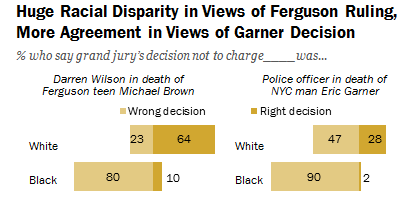We’ve come a long way since Selma in the 1960’s. Nevertheless, we are not yet a completely free and racially integrated society. The cities of Selma and Ferguson have become synonymous with racial divisions and a struggle for African-American rights.
Here is Selma in the 1960s:
And here is Ferguson in 2014:
But even so, today’s racial hostilities cannot be compared to the segregation and violence between blacks and whites in the ‘60’s. I agree with what President Barack Obama has said, as quoted by Mediaite: “We’re not talking about systematic segregation or discrimination.”
However, I do disagree with the second part of his quote when suggests that the current issues, “are solvable problems if in fact law enforcement officials are open to the kind of training and best practices that we’ve seen instituted in [a] lot of parts of the country.” While this may be true, what is also a reality is that race still divides our country, and our police force cannot be immuned to the prejudices that are a part of our communities and nation.
The graphs below point to how racially polarized America is:
President Obama has also said that cases like Michael Brown’s in Ferguson have not been as common in recent years, and rather that our awareness of them have increased due to the fast spreading of videos and information via social media. Also adding to the awareness is the ability for people in separate regions of the country, or even the world, to have a conversation about what’s going on, and to choose sides.
In our earlier Ferguson presentation and its accompanying blog post, we discussed the national, and even international, coverage of Ferguson and the countries’ interactive role through social media. Dr. Martin Luther King Jr.’s activism happened before the advent of social media. I’m not sure if these new platforms would have helped or hurt his crusade. We will never know. But what is certain, is that awareness is the first step to progress. Through television news, newspapers and radio Dr. King transmitted his message loud and clear. The U.S. has come a long way since then. And now with Twitter and other social media tools, we’ll see where we are 50 years from now.
Reviewed by Omar Mohammed.





This post asks the question I posed after reading Vlad Odobescu’s piece on ‘The New Journalists.’ What would be the perception of Selma be in the contemporary new media environment? Provocative reflections, Audrey. And I look forward to hearing more thoughts on this in the future.
Great use of photos to show that racism issues can still result in chaos like it did in the ’60s with Selma. Also, good point that the internet and social media has advanced our knowledge of issues like racism. Hopefully in 50 years, we’ll see that social media widened our awareness.
Your infographic was a nice tool to explain the situation. Although I do not see strong connections with two cities in terms of the events that happened but the facts you found out describe the US current and previous situation.